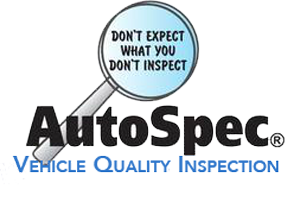Buyer Beware: Seven Ways to Uncover the Hidden Threat of Flood Damaged Vehicles
In the aftermath of record-breaking Hurricanes Irma and Harvey, many people are still reeling from the damage. But hurricanes can also cause other issues that, although less visible than obvious physical damage, can be just as painful to your wallet. According to data gathering firms Cox Automotive and Black Book, Hurricanes Harvey and Irma caused enough flooding to damage over 650,000 cars and trucks and a good number of those vehicles are projected to make their way back to the marketplace at some point.
Water damage can be fatal to modern vehicles. They have so many delicate electrical components that even seemingly small amounts of over-exposure to water and moisture can render a vehicle too big of an investment risk. Read on to learn how you can avoid buying a water-logged car after this hurricane season.
- Check for mold, mildew, damp debris and sediment, and water staining: Flood-damaged vehicles will almost always have some mildew or mold growth, often under the dashboard and seats. Mold, and its accompanying musty smell, is almost impossible to entirely remove from a flood-damaged car. If you notice any unusual or smelly residues, stay away. You should also examine the upholstery, look beneath the carpet, check under the hood, and be on the lookout for traces of sand, dirt, silt, water lines, rust, and damaged wiring and gauges. If you have access to a moisture meter, this would be a great tool to bring along on a pre-purchase inspection.
- Get an inspection: Be wary of any seller—whether an individual or a dealership—that won’t submit to an inspection. Even a seasoned car owner can get burned without a thorough inspection, so even if the vehicle looks and smells normal, get it checked out before you hand over any cash. Make sure the inspection includes a scan of all available control modules.
- Use the free VINCheck database: In 2005, there was a massive market surge of flood-damaged vehicles in the aftermath of Hurricane Katrina. This led the National Insurance Crime Bureau to establish a free database that allows buyers to use vehicle identification numbers to check for “salvage” status, allowing them to avoid purchasing flood-damaged vehicles. You can access the database at the following URL:
https://www.nicb.org/theft_and_fraud_awareness/vincheck
Make sure this isn’t your only precaution, though. Uninsured vehicles are the most likely to turn up on the market after being damaged, and their status is essentially invisible to the database. Flooded vehicles can also be disguised by being moved out of state, re-titled, and sometimes given new VINs, a practice known as “title-washing.” According to Carfax, North Carolina is one of the worst states in the nation for title washing.
- Read the seller: The seller’s attitude can often yield valuable clues about a vehicle’s status. Do they seem impatient or evasive when you want to do a thorough inspection of the vehicle? Are they withholding potentially vital information when you ask about the vehicle’s history? If anything about their behavior seems off, walk away.
- Beware of dream prices: Assume that no one will offer you a vehicle at a price that is dramatically below its actual value. If a price seems too low, it’s probably because someone is trying to unload it as quickly as possible. Don’t allow excitement over a potential bargain to cloud your judgement.
- Don’t assume that your area is immune: Although cars damaged by Harvey and Irma are most likely to make their way onto car lots in nearby states, it’s impossible to know where these vehicles might turn up. In Texas alone, approximately 15% of drivers carry no vehicle insurance at all, let alone comprehensive coverage that would compensate them for flood damage. That’s a lot of owners who will be highly motivated to get these vehicles off their hands, even if it means moving them long distances to disguise their status.
- Understand the risks: Once a vehicle’s engine, transmission and other electronic components have been soaked with water, safety and reliability become a concern. It’s easy to understand why these vehicles will be more prone to have electrical and mechanical issues at some point down the line. Even if you don’t notice anything unusual initially, the vehicle may falter without warning in potentially reliability and life-threatening ways, including failing to deploy airbags in a crash.
Several years ago, Hurricane Katrina wreaked havoc on the state of Louisiana, and shortly thereafter flood damaged cars and trucks started arriving in neighboring states. It would not be unreasonable to think that history might repeat itself in the wake of Harvey and Irma. In fact, we have personally spoken with two local dealers who unknowingly purchased flood damaged vehicles from online wholesale auctions. It wasn’t until the vehicles arrived at the dealership did they notice the obvious signs of water damage. The scary thing is, both vehicles were presented as having clean vehicle history reports and had recently passed the auctions pre-sales inspections.
Unfortunately, the aftermath of natural disasters like what was experienced in Texas and Florida can have a big and lasting effect on people in many ways. This can be especially true when a person is in the market for a pre-owned vehicle. But if you stay alert and savvy, you can avoid taking one of these vehicles home.
